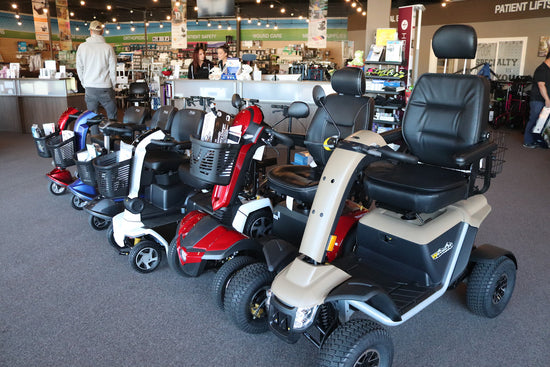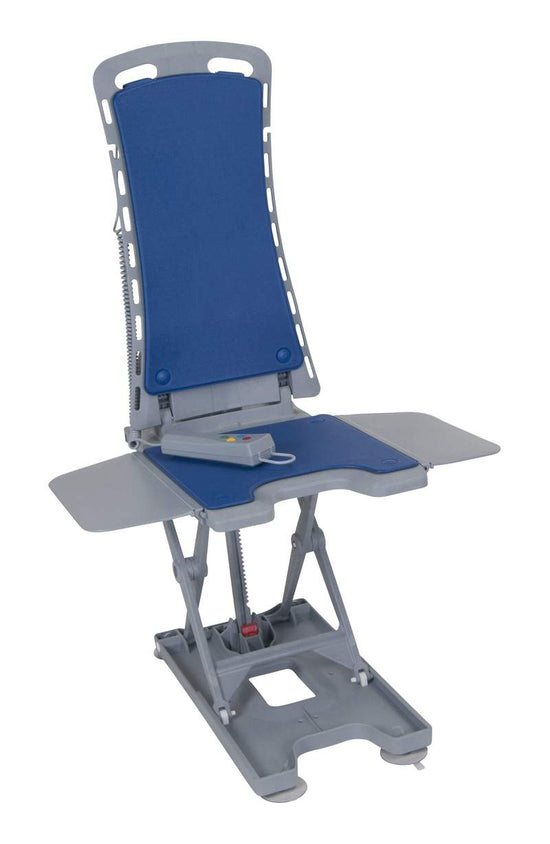Respiratory therapy equipment plays a crucial role in the management of respiratory diseases such as chronic obstructive pulmonary disease (COPD), asthma, and pneumonia. These life-saving machines are designed to assist individuals with breathing difficulties by improving oxygen delivery to the lungs and removing excess carbon dioxide from the body. For individuals with respiratory illnesses, having the right equipment in their homes can be essential to manage their conditions.
Choosing the best respiratory therapy equipment for home use can be a daunting task, with a range of options available in the market. The equipment must be selected based on an individual's specific needs and health conditions. It's essential to understand the features and differences between equipment options to make an informed decision. In this blog, we provide a comprehensive guide on how to choose the best respiratory therapy equipment for home use.
Consulting a healthcare professional for selecting respiratory therapy equipment
Consulting with a healthcare professional is crucial when selecting respiratory therapy equipment for home use. This is because the equipment can have a significant impact on an individual's health and it's essential to consider their specific needs and condition.
A healthcare professional can provide valuable guidance on the type of equipment, features, size and fit, and more to ensure that it supports the individual's needs effectively. It's important to be open and honest about your condition to get informed advice and recommendations on a brand or product that has been proven effective.
Additionally, it's advisable to consult with a healthcare professional if there are any changes in your condition to ensure that the equipment settings meet your treatment requirements. In conclusion, consulting with a healthcare professional before selecting respiratory therapy equipment can minimize mistakes and enhance the treatment's effectiveness.
Types of respiratory therapy equipment for home use
There are various types of respiratory therapy equipment available for home use. Three primary types of equipment include aerosol therapy, oxygen therapy, and suction therapy. Let's explore each type in detail.
Aerosol Therapy
Aerosol therapy is a type of respiratory therapy that involves inhaling aerosol-based medicine to assist in managing respiratory conditions. It's commonly used to treat conditions like asthma, chronic obstructive pulmonary disease (COPD), and cystic fibrosis.
There are two types of aerosol therapy: nebulizers and metered-dose inhalers (MDIs). Nebulizers convert liquid medicine into an aerosol, providing a continuous and slow mist that the individual breathes in. MDIs, on the other hand, deliver medicine in a specific dose through a metered spray.
One example of Aerosol Therapy equipment is:
50 PSI Compressor
We highly recommend the 50 PSI Compressor by Chad Drive Medical for patients who need a reliable and quiet compressor for their respiratory therapy. This compressor is ideal for those who require both humidification and nebulization. With its unique WOB-L piston system, it's designed to operate quietly while providing a high pressure that ensures effective delivery of medication via aerosol, leaving particles that are less than 2 microns in size. The easy-to-read pressure gauge feature makes it simple for patients to monitor their therapy.

Oxygen Therapy
Oxygen therapy is another type of respiratory therapy that involves administering oxygen to individuals with lower-than-normal oxygen levels in their bodies. This type of therapy can be essential for individuals with conditions like COPD, sleep apnea, and heart failure. Oxygen therapy equipment can vary in size, depending on an individual's needs.
The most commonly used oxygen therapy equipment for home use is oxygen concentrators and portable oxygen tanks. Oxygen concentrators filter the air from the environment to produce medical-grade oxygen, while portable oxygen tanks store compressed oxygen for easy portability.
Some examples of Oxygen Therapy equipment are:
1. Compact Oxygen Concentrator, 5-Liter, Ultra Quiet
The Compact Oxygen Concentrator is a highly valued device that offers relief to individuals requiring oxygen therapy. This innovative concentrator is only 16.6 inches wide, making it easily transportable. Despite its size, it offers a powerful 5-liter oxygen capacity. One of its most impressive features is its ultra-quiet operation, which ensures that patients can sleep comfortably without distractions. This concentrator is suitable for both clinical and home settings, providing flexible oxygen therapy options for patients on the go. In summary, the Compact Oxygen Concentrator is a reliable, efficient, and ultra-quiet option for anyone requiring consistent and high-quality oxygen therapy.

2. iFill Personal Oxygen Station
The iFill Personal Oxygen Station is a revolutionary device that allows individuals to fill their oxygen cylinders from the comfort of their homes. This incredible device eliminates the need for expensive and time-consuming trips to refill oxygen tanks. The iFill system is compact and easy to use, providing patients with independence and freedom. The iFill Personal Oxygen Station is capable of filling cylinders of various sizes and is compatible with a wide range of oxygen concentrators. Its user-friendly and straightforward design makes it easy for patients to use, with clearly marked buttons and a simple-to-follow display.

Suction Therapy
Suction therapy, also known as airway clearance therapy, is used to remove mucus and other secretions that can accumulate in the airways due to respiratory conditions such as cystic fibrosis or chronic bronchitis. Suction therapy is conducted through a suction machine, which can be handheld or stationary, connected to flexible tubing and various suction catheters.
Some examples of Suction Therapy equipment are:
1. Vacu-Aide QSU Quiet Suction Unit with External Filter, Battery, and Carrying Case
The Vacu-Aide Compact Suction Unit is a powerful and reliable device for anyone who needs effective airway clearance. This suction unit has a 725cc reusable bottle and comes with a carrying case, making it lightweight and easy to transport. It provides consistent suction performance with adjustable vacuum levels and can run on AC power or an optional battery pack. The Vacu-Aide compact suction unit can be used both in a clinical setting and at home to aid with respiratory therapy. With its compact design and portability, it's a great addition to any medical toolkit or for individuals requiring respiratory support on the go.

2. Heavy Duty Suction Pump Machine
The Heavy Duty Suction Pump Machine is a powerful and reliable device used for various medical suction applications. It's designed for high performance and can rapidly clear airways of unwanted fluids. This suction pump provides adjustable vacuum levels with an easy-to-read gauge to help regulate the pressure for efficient performance. Its compact design, sturdy metal casing, and adjustable handle make it portable and easy to transport. This machine is suited for a broad range of clinical environments, including hospitals and clinics. With its rugged construction and high-performance suction capabilities, the Heavy Duty Suction Pump Machine is an excellent addition to any medical toolkit.

3. Vacu-Aide QSU Quiet Suction Unit with External Filter, Battery, and Carrying Case
The Vacu-Aide QSU Quiet Suction Unit with external filter, battery, and carrying case is a dependable and quiet suction device perfect for airway clearance needs. This suction unit is equipped with an external filter that provides a higher level of protection to the motor and is easy to replace. The added battery feature allows for greater portability and flexibility, making it an excellent option for respiratory therapy on the go. The Vacu-Aide QSU Quiet Suction Unit is lightweight, and compact, and comes with a carrying case for easy transport, making it an ideal choice for both clinical and home settings.

How to maintain respiratory therapy equipment
Maintaining your respiratory therapy equipment is crucial to ensure optimal performance and safety. Regular cleaning and disinfecting of your equipment can help prevent the buildup of bacteria and viruses that could potentially worsen respiratory symptoms.
Make sure to follow the manufacturer's instructions for cleaning and disinfecting your equipment, and replace filters as recommended. It's also essential to routinely check for any signs of damage or wear and tear and have a professional inspect and service your equipment regularly.
Proper maintenance of your respiratory therapy equipment not only results in better performance but also helps extend the lifespan of the device.
Frequently asked questions about respiratory therapy equipment
What is respiratory therapy equipment, and what is its purpose?
Respiratory therapy equipment is a specialized device designed to assist patients with respiratory problems, such as those with chronic obstructive pulmonary disease (COPD), sleep apnea, or asthma. Its purpose is to provide medical-grade air to the patient, either through inhalation or by removing unwanted secretions from the airways.
What kinds of respiratory therapy equipment are available?
There are various types of respiratory therapy equipment available, including oxygen concentrators, nebulizers, suction machines, and CPAP or BiPAP machines.
What factors should I consider when buying respiratory therapy equipment?
It’s important to consider the severity of your condition, your lifestyle, and preferences, the portability, and noise level of the equipment, maintenance, and warranty, as well as your budget.
How often should I replace filters on my respiratory therapy equipment?
It depends on the manufacturer's recommendation, but typically filters should be replaced every 30-90 days or as recommended by the manufacturer.
How do I clean and disinfect my respiratory therapy equipment?
Use a mild detergent and warm water to clean the equipment and let it dry completely before using it again. Disinfect your equipment regularly using a solution of water and vinegar or a disinfecting solution recommended by the manufacturer.
What should I do if my respiratory therapy equipment stops working?
If you experience any issues with your respiratory therapy equipment, you should refer to the manufacturer's troubleshooting guide, or contact the customer service representative to have the issue fixed.
Can I travel with respiratory therapy equipment?
Yes, most respiratory therapy equipment is portable and designed for travel. Before traveling, make sure to check with the manufacturer's guidelines and airline regulations.
Do I need a prescription to buy respiratory therapy equipment?
Yes, you will need a prescription from your physician to legally purchase respiratory therapy equipment, including oxygen concentrators, nebulizers, and CPAP/BiPAP machines.




